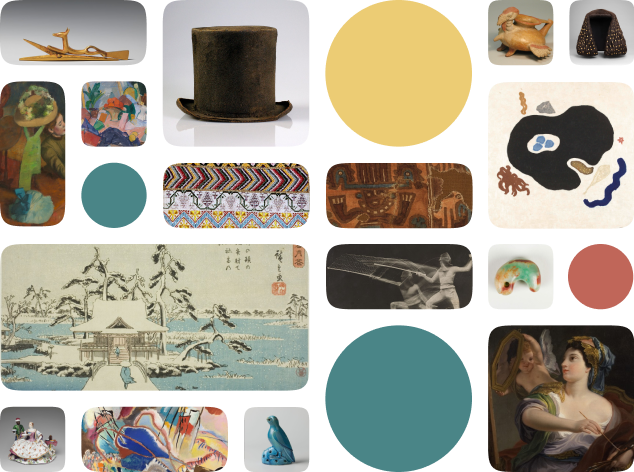Portrait of a Man Wearing an Ivy Wreath
Creator Name
Cultural Context
Date
Source
About the work
To create the startlingly life-like effect, artists used encaustic, or pigmented wax on wood, to painstakingly shade and tint the faces. Some include gilding, or work with gold leaf, a sign of wealth. This portrait has an unusual amount of gilding in the background and on the wreath on the man’s head, indicating high status.
When European and American scholars first studied these portraits in the late 1800s and early 1900s, the images defied categorization: Were they Egyptian or Greco-Roman? Today, however, art historians view the images as a unique composite genre emerging from contact between these two ancient Mediterranean cultures. Read more about status and syncretism in Greco-Egyptian funerary portraiture.
This portrait belongs to a large group of similar works known as “Fayum portraits,” so-named for the region in northern Egypt in which many have been discovered. To create this man’s likeness, the artist painted a thin piece of wood with encaustic, or pigmented wax, a medium that not only gave the impression of three-dimensionality but also resisted fading and deterioration in the dry climate of Egypt. These highly individualized and lifelike portraits conveyed the wealth and status of the person depicted through clothing, jewelry, and other embellishments, such as the gold wreath of ivy worn by this man.
Work details
Title
Creator
Worktype
Cultural Context
Material
Dimensions
Technique
Language
Date
Provenance
Style Period
Rights
Inscription
Location
Source
Subjects
Topic
Curationist Metadata Contributors
All Works in Curationist’s archives can be reproduced and used freely. How to attribute this Work:
Help us improve this content!
Save this work.
